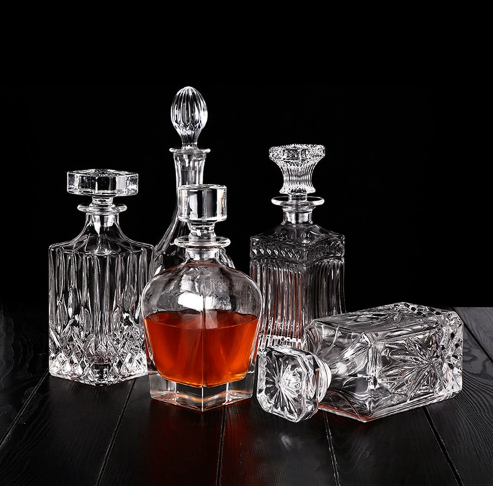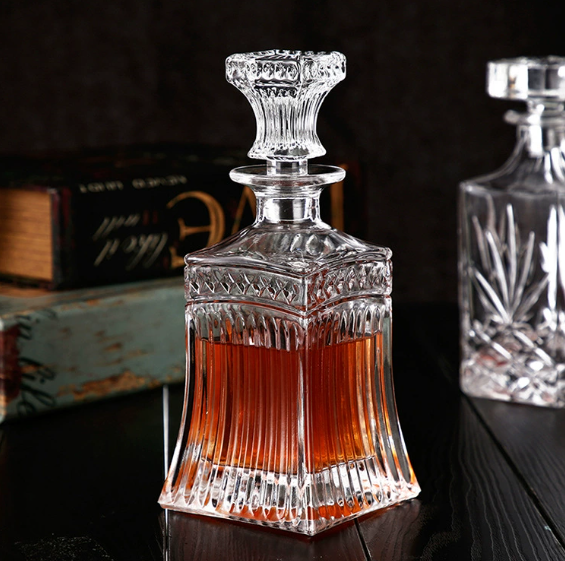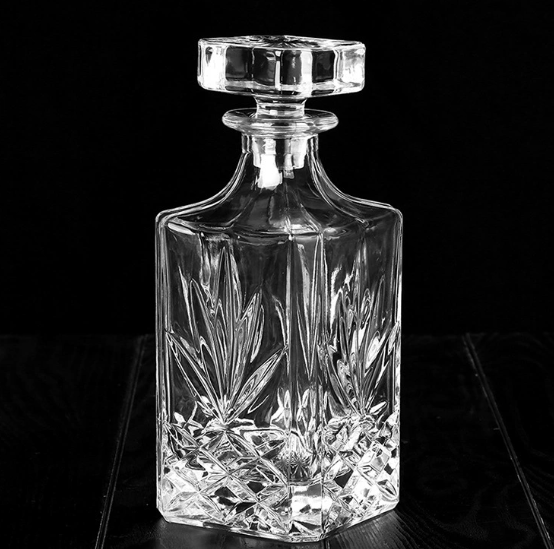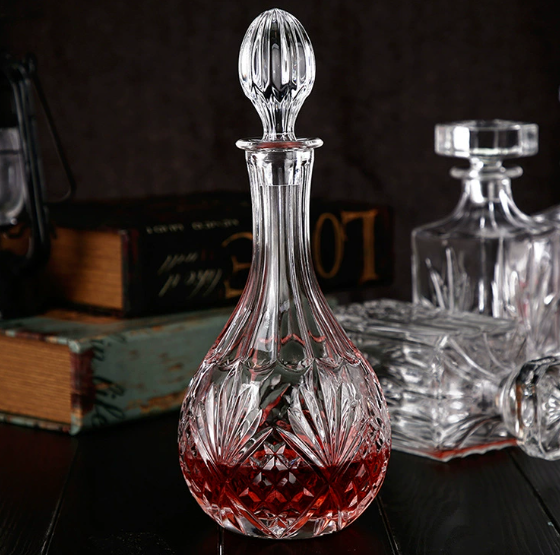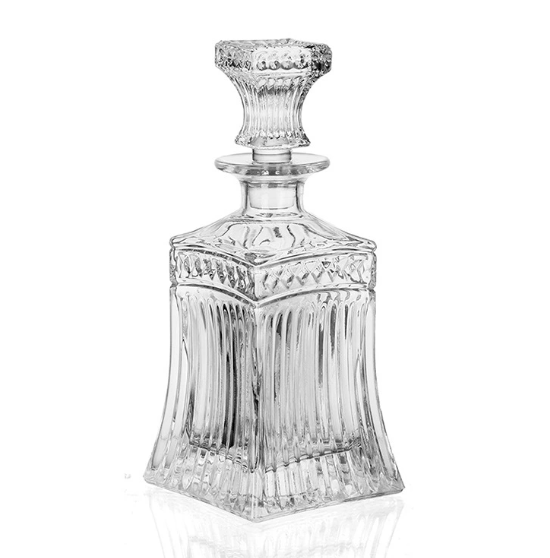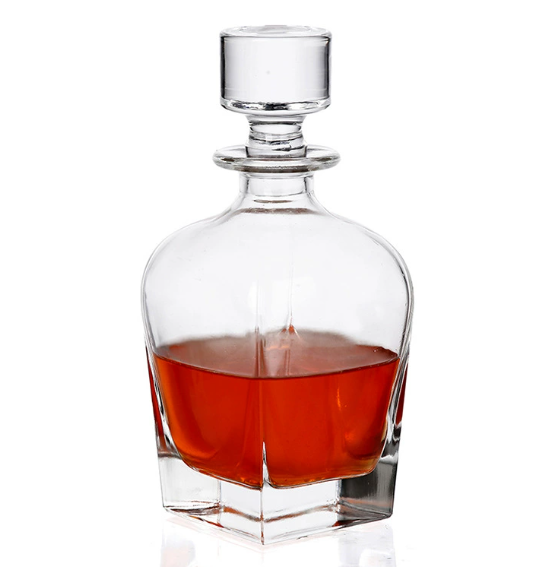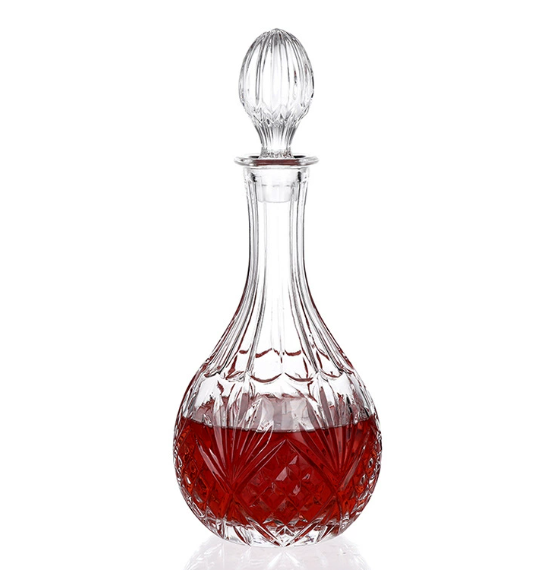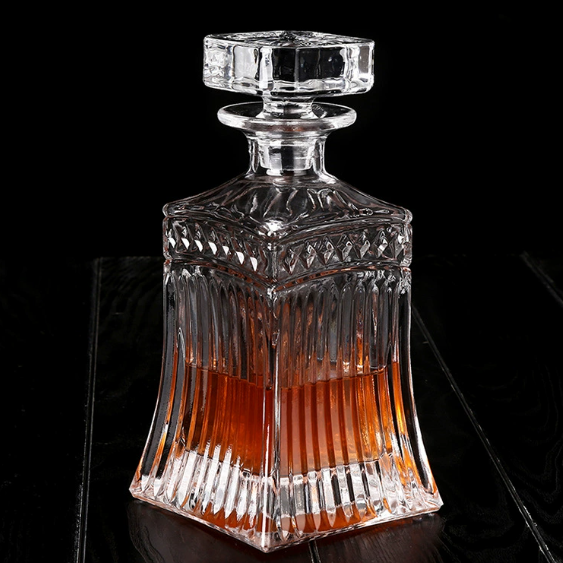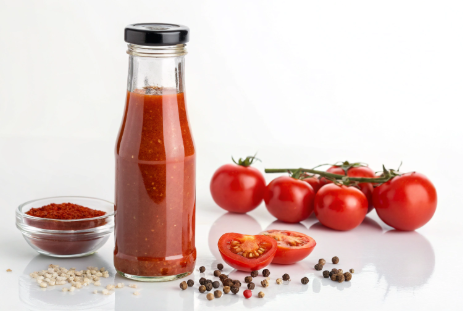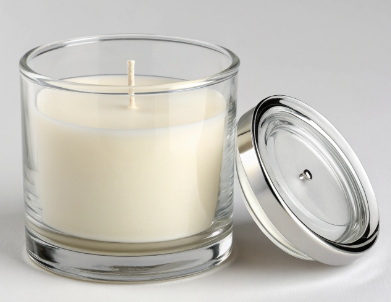Liquor bottlesare more than mere containers; they are an integral part of the branding, marketing, and consumer experience in the alcoholic beverage industry. The size of a liquor bottle plays a crucial role in how the product is perceived, priced, and consumed. Whether for personal use, gifting, or large events, understanding the different liquor bottle sizes helps manufacturers, distributors, and retailers optimize inventory and meet consumer demands.
This comprehensive guide explores the various liquor bottle sizes, their common uses, cultural significance, and market trends. We will also discuss howwww.paupacking.comsupports the liquor industry by providing high-quality, customizable glass liquor bottles across a wide range of sizes, helping brands deliver exceptional packaging solutions.
The Importance of Liquor Bottle Sizes
Liquor bottle sizes influence many aspects of the business and consumer experience:
Consumption Patterns
Different bottle sizes cater to various consumption occasions. For example, miniatures are ideal for sampling or travel, while larger bottles suit parties and celebrations. Understanding these patterns helps brands target the right audience and optimize product offerings.
Pricing Strategy
Bottle size directly impacts pricing. Smaller bottles often carry a higher price per milliliter but lower upfront cost, making them accessible to new consumers or those seeking variety. Larger bottles offer better value per volume, appealing to frequent users or bulk buyers.
Regulatory Compliance
Many countries regulate liquor bottle sizes to control taxation, labeling, and distribution. Brands must adhere to these regulations to avoid legal issues and ensure smooth market entry.
Brand Positioning
Unique bottle sizes and shapes can differentiate products in a crowded market, enhance shelf presence, and reinforce brand identity.
Sustainability
Larger bottles may reduce packaging waste per volume, aligning with eco-friendly goals. Choosing the right bottle size can contribute to a brand’s sustainability strategy.
Standard Liquor Bottle Sizes and Their Uses
Liquor bottlescome in a variety of sizes, from tiny miniatures to massive magnums and beyond. Below is a detailed table summarizing the most common sizes:
| Bottle Size Name | Volume (ml) | Volume (oz) | Common Uses and Notes |
|---|---|---|---|
| Miniature (Nip) | 50 | 1.7 | Samples, airline bottles, party favors, promotional giveaways |
| Quarter Pint | 100 | 3.4 | Small gifts, travel, limited use |
| Half Pint | 200 | 6.8 | Personal use, small gatherings |
| Pint | 375 | 12.7 | Popular for cocktails, personal consumption |
| Demi | 350 | 11.8 | Specialty liquors, European markets |
| Fifth (Standard) | 750 | 25.4 | Most common retail size in the US and many countries |
| Liter | 1000 | 33.8 | Bars, frequent users, bulk buyers |
| Magnum | 1500 | 50.7 | Parties, celebrations, luxury gifting |
| Jeroboam | 3000 | 101.4 | Large events, collector’s items |
| Rehoboam | 4500 | 152.1 | Rare, ceremonial use |
| Methuselah | 6000 | 202.8 | Banquets, premium displays |
| Salmanazar | 9000 | 304.2 | Ultra-rare, luxury events |
| Balthazar | 12000 | 406.3 | Collector’s editions, special occasions |
| Nebuchadnezzar | 15000 | 507.2 | Largest standard size, very rare |
Detailed Descriptions of Popular Bottle Sizes
Miniature (Nip) Bottles – 50ml
Miniatures are the smallestliquor bottles, holding approximately 1.7 ounces. They are perfect for sampling, travel, and promotional purposes. Their compact size makes them convenient for consumers who want to try new spirits without committing to a full bottle.
Use Cases:Airline service, hotel mini-bars, party favors, and gift sets.
Quarter Pint Bottles – 100ml
Quarter pints are slightly larger and often used for travel or gifting. They provide enough volume for a few servings but remain easy to carry and store.
Use Cases:Travel kits, sampler packs, and niche markets.
Half Pint Bottles – 200ml
Half pints hold about 6.8 ounces and are popular for personal use or small social gatherings. They offer a balance between portability and quantity.
Use Cases:Personal consumption, small parties, and gift boxes.
Pint Bottles – 375ml
Pint bottles are commonly used for cocktails and moderate personal use. They are also popular in markets where smaller bottle sizes are preferred for affordability.
Use Cases:Bars, restaurants, and consumers seeking moderate quantities.
Fifth (Standard) Bottles – 750ml
The 750ml bottle, often called a "fifth," is the standard size for most liquors in the US and many other countries. It offers a good balance of volume, price, and portability.
Use Cases:Retail sales, bars, and home use.
Liter Bottles – 1000ml
One-liter bottles are popular for frequent users and commercial settings. They provide more volume at a better price per ounce.
Use Cases:Bars, restaurants, and bulk buyers.
Magnum Bottles – 1500ml
Magnums are large bottles used for celebrations, events, and luxury gifting. They make a strong visual impact and are often collectible.
Use Cases:Weddings, parties, and premium brand promotions.
Handle Bottles – 1.75 Liters
A 1.75-liter liquor bottle is commonly known as a "handle." The name comes from the distinctive grip or handle attached to many bottles of this size, making it easier to pour and carry. Holding about 59.2 ounces, handles are especially popular in theUnited Statesfor parties, large gatherings, and value-focused shoppers who want more volume per purchase.
Use Cases:
Ideal for stocking bars, hosting events, or for those who prefer to buy in bulk. The handle size is a staple on shelves alongside magnums for larger occasions and is widely available across a range of popular brands likeSmirnoff,Jack Daniel’s, andTito’s.
Half Gallon (Handle) Bottles – 1,750ml
For those who like to keep the party going, half gallon bottles—often called "handles" for their built-in grip—offer serious volume at 1,750ml (59.2 ounces). This size is especially popular with group settings, large gatherings, or occasions where mixing big batches is the order of the day.
With a capacity greater than a magnum (1,500ml) but shy of a Jeroboam (3,000ml), half gallons occupy a niche among large-format bottles. The small difference in volume may seem slight—just 250ml more than a magnum—but handles are designed with practicality in mind. Their integral handles make pouring easier, especially when you're serving a crowd or prepping cocktails for a busy event.
Use Cases:
- Stocking up for extended entertaining
- Bulk buying for home bars
- Group mixers or events requiring large volumes
While not as commonly seen as the iconic magnum at upscale celebrations, handles remain a go-to choice for convenience and value, particularly in theUSmarket.
Comparing 750ml and 1.75L Bottles: Which Holds More Alcohol?
When comparing bottle sizes, the 1.75-liter bottle, often referred to as a "handle," contains significantly more alcohol than the standard 750ml bottle. To put it in perspective:
- 750mlequals 0.75 liters
- 1.75 litersis more than double that amount
So, if you're stocking up for a large event or just want the best value for your purchase, the 1.75L bottle delivers over twice as much spirit as the typical 750ml option. This makes it a popular choice for parties, gatherings, and households with frequent entertainers.
Regional Variations in Liquor Bottle Sizes
Liquor bottle sizes vary by region due to cultural preferences and legal standards.
-
United States:The 750ml fifth is standard, with miniatures and larger sizes also common.
-
Europe:700ml bottles are typical in the UK, while 500ml and 1-liter bottles are popular elsewhere.
-
Asia:A mix of global and local sizes, including smaller bottles for gifting and ceremonial use.
-
Latin America:Increasing adoption of standard sizes like 375ml, 750ml, and 1 liter.
Regulatory frameworks also influence permissible bottle sizes, especially concerning alcohol content and taxation.
Table: Regional Liquor Bottle Size Preferences
| Region | Common Bottle Sizes (ml) | Notes |
|---|---|---|
| North America | 50, 200, 375, 750, 1000, 1500 | Standardized sizes, “fifth” is 750ml |
| Europe | 500, 700, 750, 1000 | UK favors 700ml, others vary |
| Asia | 50, 180, 375, 700, 1000 | Mix of global and local sizes |
| Latin America | 200, 375, 750, 1000 | Growing adoption of standard sizes |
Packaging and Design Considerations
Selecting the right bottle size is only part of the packaging strategy. Design, material, and closure type significantly affect product appeal and functionality.
-
Material:Glass is preferred for liquor bottles due to its inertness and premium feel.www.paupacking.comoffers a wide range of glassliquor bottlesin various sizes and finishes.
-
Closure:Options include corks, screw caps, and synthetic stoppers, each offering different sealing and aesthetic properties.
-
Labeling:Larger bottles provide more space for branding and information; smaller bottles require concise, impactful labels.
-
Sustainability:Brands increasingly seek eco-friendly packaging, such as recycled glass or lightweight bottles.
Storage Space: A Key Consideration
When choosing the right liquor bottle size, storage space plays a surprisingly important role—especially if you're working with tight quarters. Larger bottles, such as the classic 750ml or magnum sizes, take up significantly more room on shelves or in cabinets than their petite 250ml or miniature counterparts. For home bars tucked into cozy apartments, smaller bottles are far more accommodating and let you fit a greater variety within limited space (good news for those who enjoy options).
On the flip side, if you’re stocking a commercial bar or have the luxury of a spacious cellar, larger bottles can be more practical for both aesthetics and inventory efficiency—they simply demand the real estate to match. Always factor in your available storage before filling your cart; sometimes, it’s not what you want to drink, but where you can store it that makes the decision for you.
www.paupacking.com: Your Liquor Bottle Partner
www.paupacking.comis a leading supplier ofliquor bottles, providing:
-
Wide Size Range:From miniatures to magnums and beyond, customizable to brand needs.
-
Custom Designs:Unique shapes, embossing, and finishes to differentiate products.
-
High-Quality Glass:Durable, clear, amber, and colored glass options with excellent barrier properties.
-
Sustainable Packaging:Use of recycled materials and eco-friendly production.
-
Regulatory Compliance:Bottles designed to meet global food and beverage packaging standards.
-
Bulk Supply Capability:Efficient production and logistics for large orders.
Partnering withwww.paupacking.comensures access to premium packaging that enhances product appeal and market success.
Table:www.paupacking.comLiquor Bottle Offerings by Size
| Bottle Size Name | Volume (ml) | Typical Use | Available Options atwww.paupacking.com |
|---|---|---|---|
| Miniature (Nip) | 50 | Samples, travel, gifts | Clear and amber glass, custom labeling |
| Quarter Pint | 100 | Sampling, compact gifting | Custom shapes, colored glass |
| Half Pint | 200 | Personal use, small groups | Variety of finishes and closures |
| Pint | 375 | Cocktails, personal use | Embossing and decorative options |
| Fifth (Standard) | 750 | Retail standard, bars | Wide range of styles, sustainable glass options |
| Liter | 1000 | Frequent use, bars | Custom printing and closures |
| Magnum | 1500 | Events, luxury gifting | Premium finishes, unique shapes |
Market Trends Influencing Liquor Bottle Sizes
Premiumization
Consumers increasingly seek premium packaging that reflects quality and craftsmanship. Larger and uniquely shaped bottles enhance perceived value.
Sustainability
Brands adopt lighter bottles, recycled glass, and refillable options to reduce environmental impact.www.paupacking.comintegrates sustainability in its packaging solutions.
Convenience and Portability
Smaller bottles cater to on-the-go consumers, travelers, and sample seekers, driving demand for miniatures and half-pints.
Regulatory Changes
Taxation and labeling laws influence bottle size offerings in different markets, requiring brands to adapt packaging strategies accordingly.
Visual Inspiration: Liquor Bottle Designs
To complement this guide, here are some visual examples ofliquor bottlesin various sizes and styles, showcasing the diversity and creativity in packaging:
Conclusion
Understanding liquor bottle sizes is essential for brands, retailers, and distributors to meet consumer needs, regulatory requirements, and market trends. From the petite miniature to the grand magnum, each size serves a unique purpose and market segment.
www.paupacking.comoffers a comprehensive portfolio ofliquor bottlesin all sizes, combined with customization, sustainability, and quality assurance. Leveraging their expertise enables brands to optimize packaging strategies, enhance brand appeal, and deliver exceptional consumer experiences.




